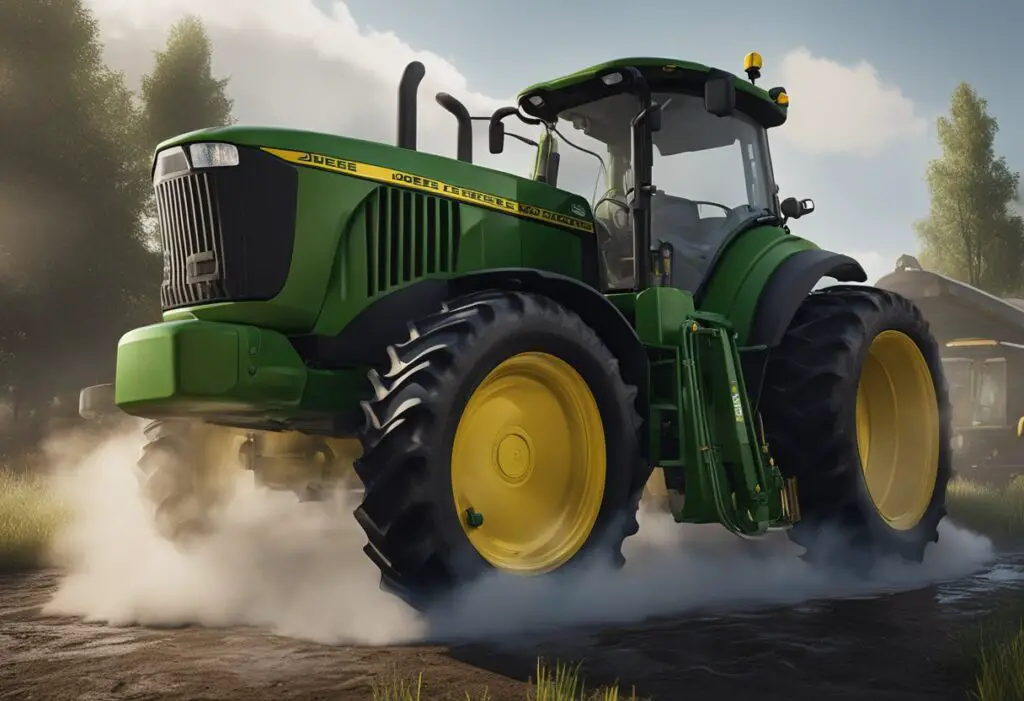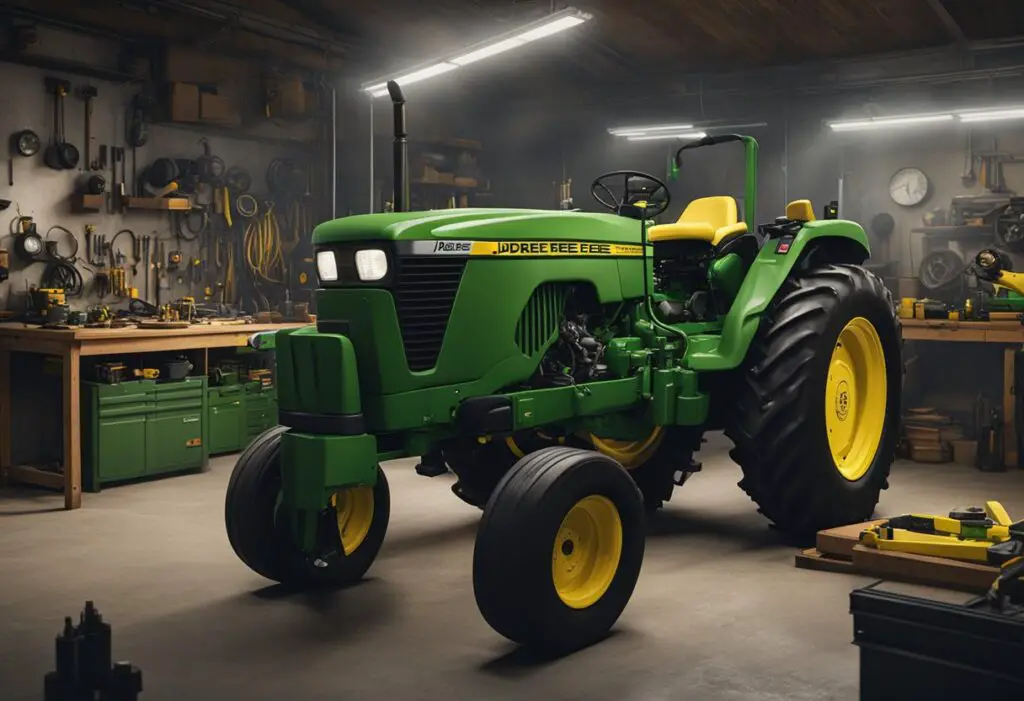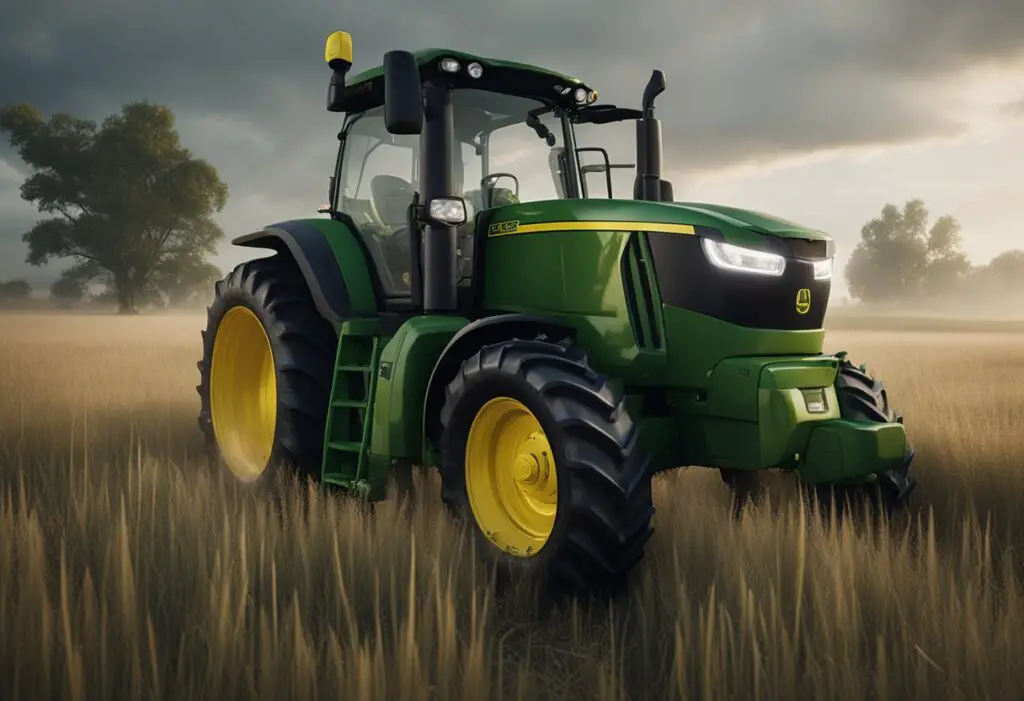This article delves into the common problems associated with the John Deere X730 lawn tractor. As a popular choice among homeowners, the X730 is known for its durability and powerful engine. However, like any machine, it is not immune to issues that may arise during operation.

Regular maintenance is key to keeping the X730 running smoothly. Neglecting routine upkeep can lead to a variety of problems, including starting issues, rough running, overheating of the engine, and exhaust smoke. Clogged components can also degrade the tractor’s performance, so it is important to keep it free from dirt and debris. In the following sections, we will explore the most common problems associated with the John Deere X730 and provide effective solutions to fix them.
Common Mechanical Issues
The John Deere X730 is a powerful and durable lawn tractor. However, like any other machine, it can experience mechanical issues that require troubleshooting and fixing. In this section, we will discuss some of the most common mechanical issues that X730 owners may face.
Engine Troubles
The engine is the heart of the X730, and it is also one of the most common sources of problems. Overheating is a frequent issue, often caused by a clogged air filter, a malfunctioning thermostat, or a damaged radiator. Another common issue is related to the fuel system, which can lead to starting problems, rough running, and exhaust smoke. If the engine is cranking but refuses to start, the most common cause is faulty fuel delivery, usually clogged fuel filters or hoses.
Steering and Transmission Challenges
Another set of common issues involves the steering and transmission systems. Vibration and noise are often caused by worn-out bearings, which can be replaced to fix the problem. Transmission challenges may arise from low fluid levels, damaged gears, or worn-out belts. In some cases, the transmission may slip or fail to engage, which requires immediate attention from a qualified mechanic.
Mower Deck and Cutting Problems
The mower deck and cutting system are also prone to problems, especially if the X730 is not maintained properly. Uneven cutting is a common issue that may result from neglecting your tractor’s routine maintenance. The leading cause of uneven cuts is blunt or damaged blades. Over time, mower blades get blunt due to regular use. The mower deck may also experience problems related to the belts, pulleys, or spindles, which can lead to poor performance and reduced cutting efficiency.
To troubleshoot these issues, X730 owners should consult the owner’s manual or seek advice from a qualified mechanic or dealer. In some cases, simple solutions such as cleaning or replacing filters, belts, or blades can fix the problem. However, more complex issues may require professional diagnosis and repair.
Electrical and Fuel Problems
The John Deere X730 has some common electrical and fuel-related problems that may arise over time. These problems can cause starting difficulties, battery issues, and fuel system complications. This section will discuss these problems and provide some troubleshooting tips.
Starting Difficulties and Battery Issues
One of the most common problems with the John Deere X730 is starting difficulties. This can be caused by a variety of factors, including a dead battery, faulty spark plugs, or a bad starter. If the engine fails to crank, it could be a sign that the battery is dead or weak. In this case, the battery should be charged or replaced.
Another potential cause of starting difficulties is faulty spark plugs. If the engine cranks but fails to start, it could be due to worn or fouled spark plugs. These should be checked and replaced if necessary.
Fuel System Complications
The fuel system of the John Deere X730 can also cause problems. Clogged fuel filters, a dirty fuel tank, or a malfunctioning carburetor can all lead to engine performance issues. If the engine is running poorly or stalling, the fuel filter should be checked and replaced if necessary.
A dirty fuel tank can also cause problems with the fuel system. Dirt and debris can accumulate in the tank and clog the fuel lines. Regular cleaning of the fuel tank can help prevent this issue.
If the engine is still running poorly after checking the fuel filter and tank, the carburetor may be the culprit. A malfunctioning carburetor can cause the engine to run too rich or too lean, leading to poor performance. In this case, the carburetor should be checked and adjusted or replaced if necessary.
Maintenance and Upkeep

Regular maintenance and upkeep are essential to keep the John Deere X730 running smoothly. Neglecting routine maintenance can lead to bigger and more expensive problems down the line. Here are a few tips to keep the X730 in good condition.
Regular Maintenance Essentials
The X730 requires regular maintenance to keep it in good condition. Some of the essential maintenance tasks include:
- Changing the engine oil: The engine oil needs to be changed regularly to ensure that the engine runs smoothly. Check the owner’s manual for the recommended oil change intervals.
- Checking the air filter: The air filter needs to be checked regularly and cleaned or replaced as needed. A dirty air filter can reduce engine performance and increase fuel consumption.
- Inspecting the blades: The mower blades need to be inspected regularly for wear and tear. Dull or damaged blades can lead to uneven cuts and damage to the deck.
- Checking the drive belt: The drive belt needs to be checked for wear and tension. A loose or worn drive belt can cause the blades to slip or not turn at all.
- Checking the tire pressure: The tire pressure needs to be checked regularly to ensure that the tires are properly inflated. Low tire pressure can affect the handling of the X730 and cause damage to the tires.
Addressing Wear and Tear
Over time, the X730 will experience wear and tear. Some of the common wear and tear issues include:
- Worn mower blades: Mower blades can become worn over time and need to be replaced. A worn blade can cause damage to the deck and lead to uneven cuts.
- Worn deck pulleys: The deck pulleys can become worn over time and need to be replaced. A worn pulley can cause the blades to slip or not turn at all.
- Dirty cooling fins: The cooling fins on the engine need to be cleaned regularly to ensure that the engine stays cool. Dirty cooling fins can cause the engine to overheat and lead to bigger problems.
Conclusion

Experienced with a unique perspective, the John Deere X730 is a powerful and reliable lawn tractor. However, like any machine, it is not immune to problems. Customers have reported various issues with the X730, including starting problems, engine problems, rough running problems, belt slipping, uneven cuts, and steering issues.
Some of these problems can be solved with simple maintenance, while others require the expertise of a professional mechanic. X730 owners need to prioritize regular maintenance to ensure the precision, efficiency, safety, and reliability of their machine. Neglecting maintenance can lead to more serious problems down the line, which can be costly to repair.
Fortunately, there are solutions available for most of the common problems faced by X730 owners. Regular maintenance, including changing the oil and filters, checking the spark plugs, and inspecting the blades, can go a long way in preventing problems from arising. Additionally, using quality fuel and keeping the tractor clean can help prevent clogged components and degraded performance.
What are common starting problems with the John Deere X730?
The John Deere X730 may encounter starting problems primarily due to issues like a dead battery, old or contaminated fuel, dirty spark plugs, or a faulty starter solenoid. Regular checks and maintenance, such as ensuring the battery is fully charged, changing old fuel, and cleaning or replacing spark plugs, can help alleviate these issues.
Why does the John Deere X730 experience power loss?
Power loss in the John Deere X730 can be attributed to a dirty air filter, a blocked fuel line, or a malfunctioning carburetor. Regularly cleaning or replacing the air filter, ensuring the fuel line is clear of obstructions, and servicing the carburetor can prevent power loss.
How can I fix overheating issues in the John Deere X730?
Overheating issues in the John Deere X730 might be caused by a clogged cooling system, low coolant levels, or a defective radiator cap. To address this, clean any debris from the radiator and cooling fins, check and refill coolant levels, and ensure the radiator cap is functioning properly.
What should I do about hydraulic lift problems in the John Deere X730?
Hydraulic lift problems in the John Deere X730, such as slow response or failure to lift, may be due to low hydraulic fluid levels, air in the hydraulic system, or worn hydraulic components. Checking and topping up the hydraulic fluid, bleeding the system to remove air, and replacing worn parts can resolve these issues.
Why does the John Deere X730 have electrical system issues?
Electrical issues in the John Deere X730, including failures in starting or operational functions, can stem from corroded electrical connections, a faulty ignition switch, or a failing alternator. Regular inspections for corrosion, ensuring all connections are secure, and testing the ignition switch and alternator can help fix electrical problems.
How do I address transmission slipping in the John Deere X730?
Transmission slipping might occur due to low transmission fluid, a dirty transmission filter, or wear and tear on transmission components. Maintaining the correct fluid level, replacing the transmission filter regularly, and inspecting the transmission for worn parts are recommended steps to prevent slipping.

Leave a Reply